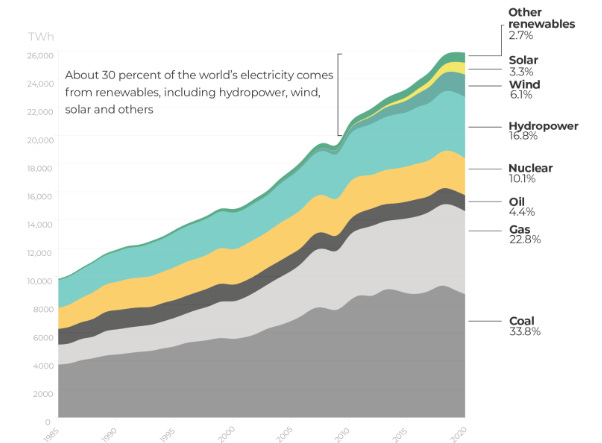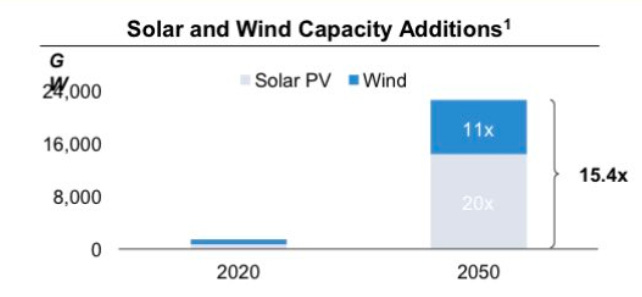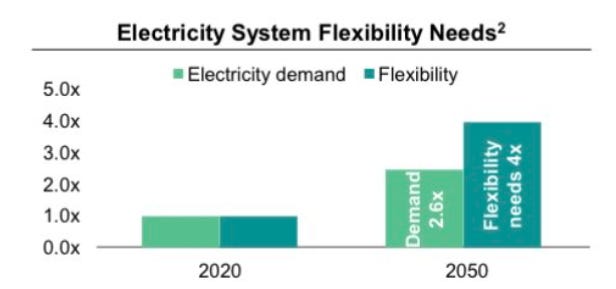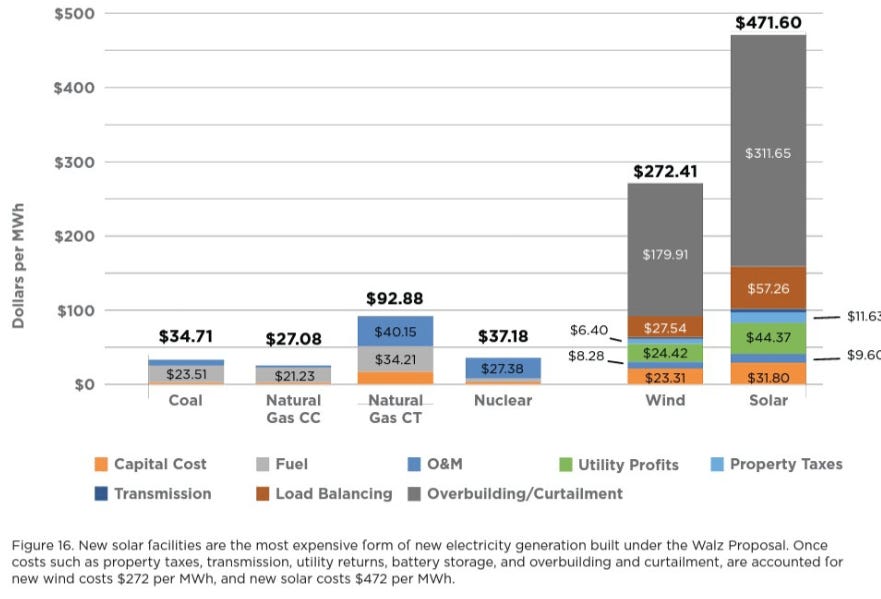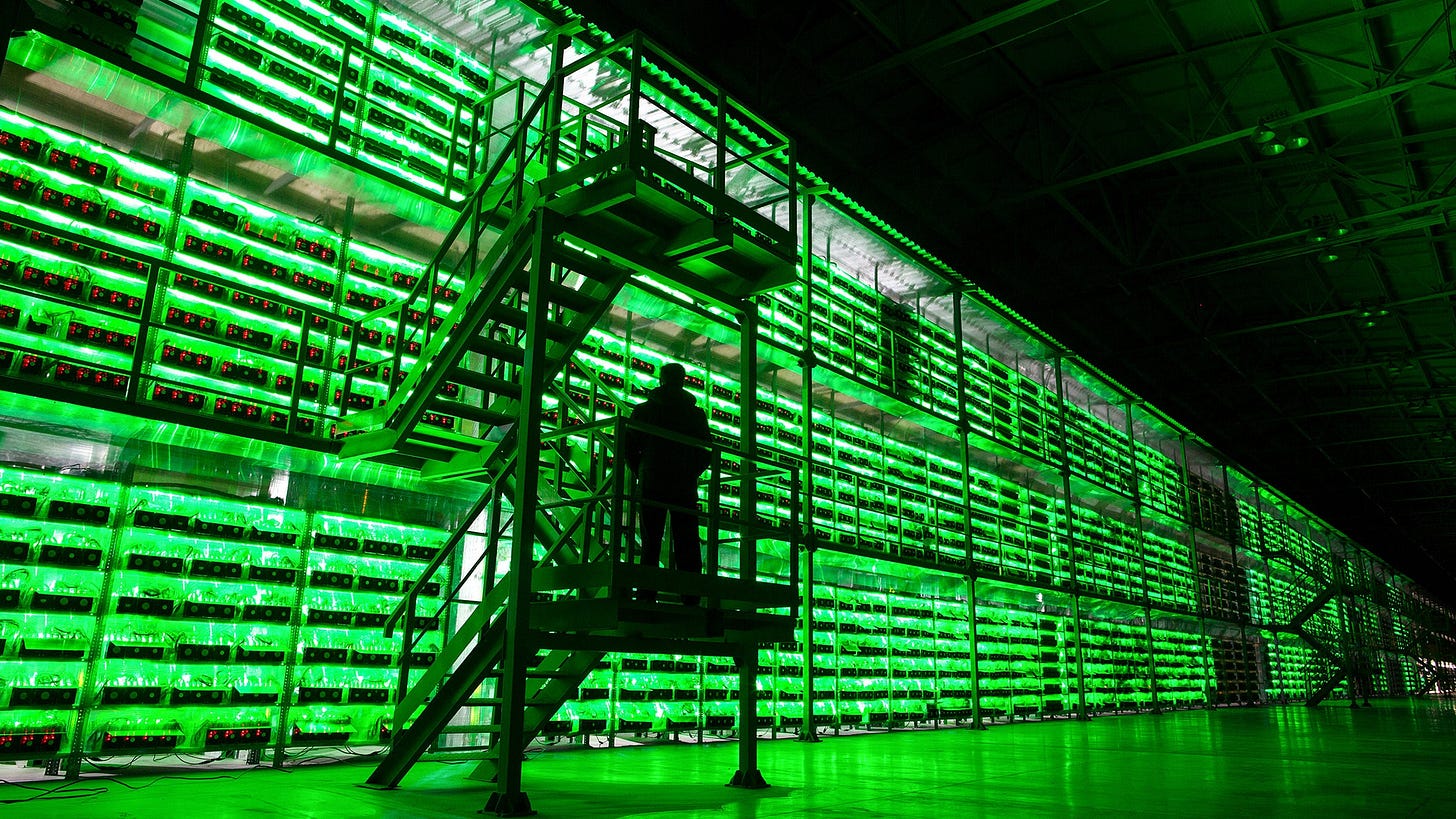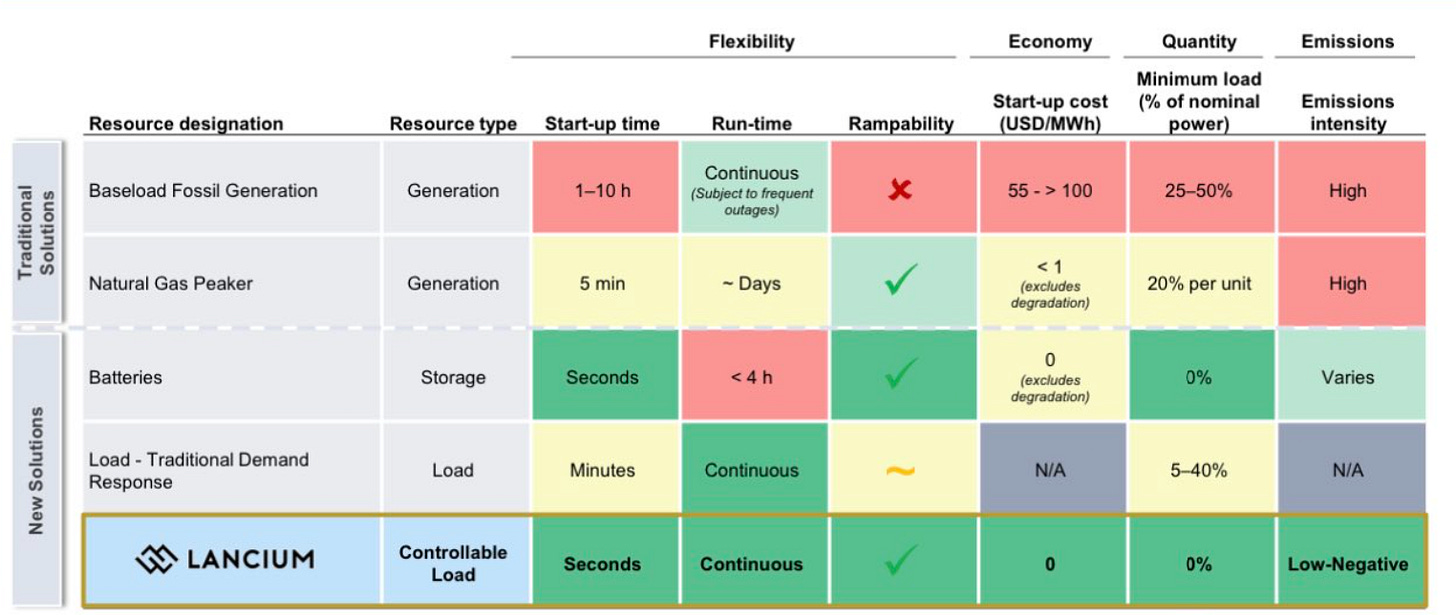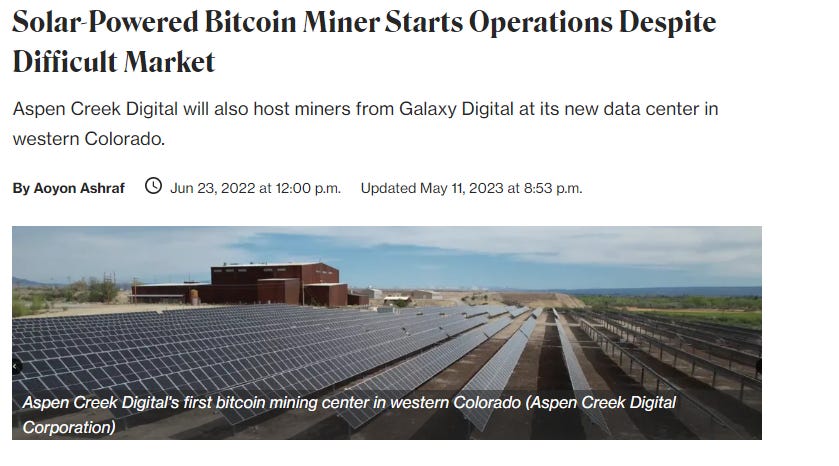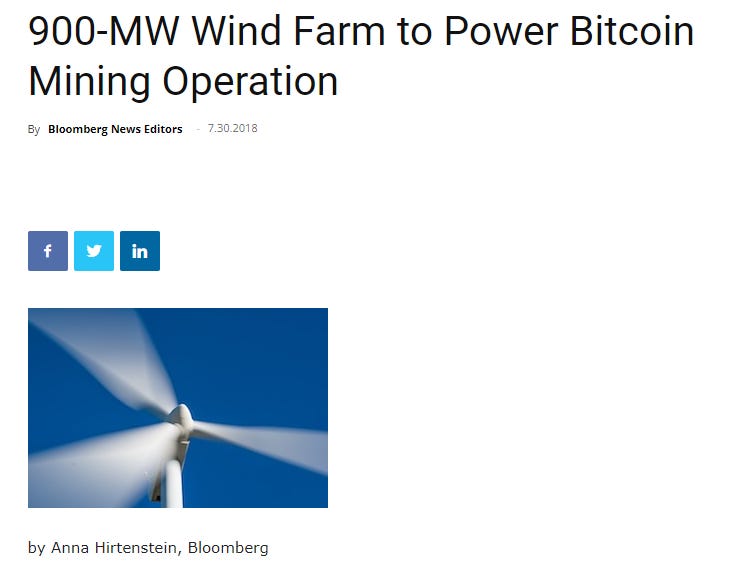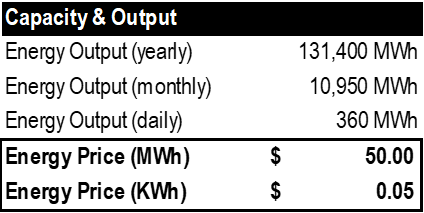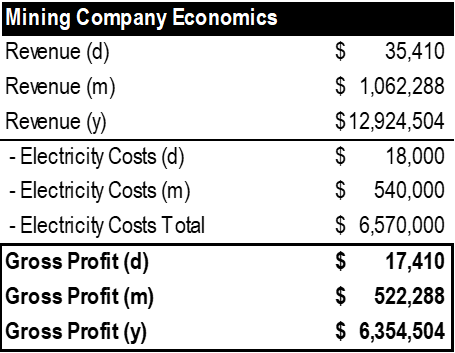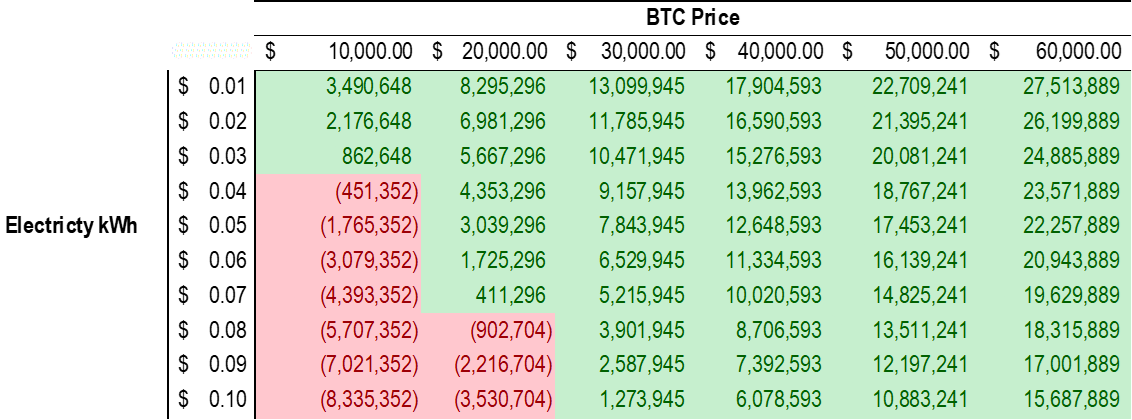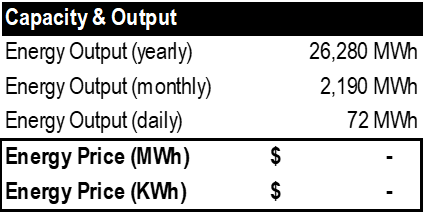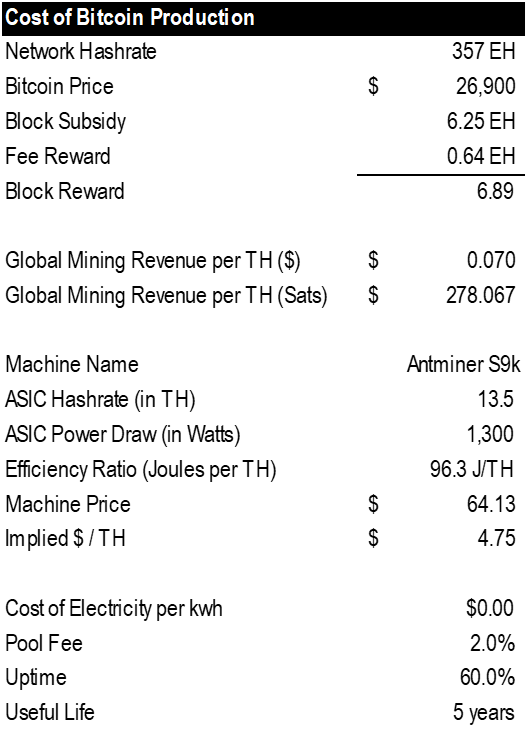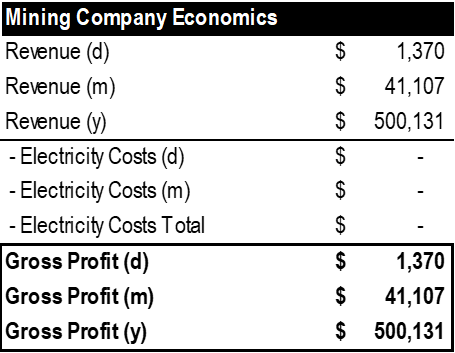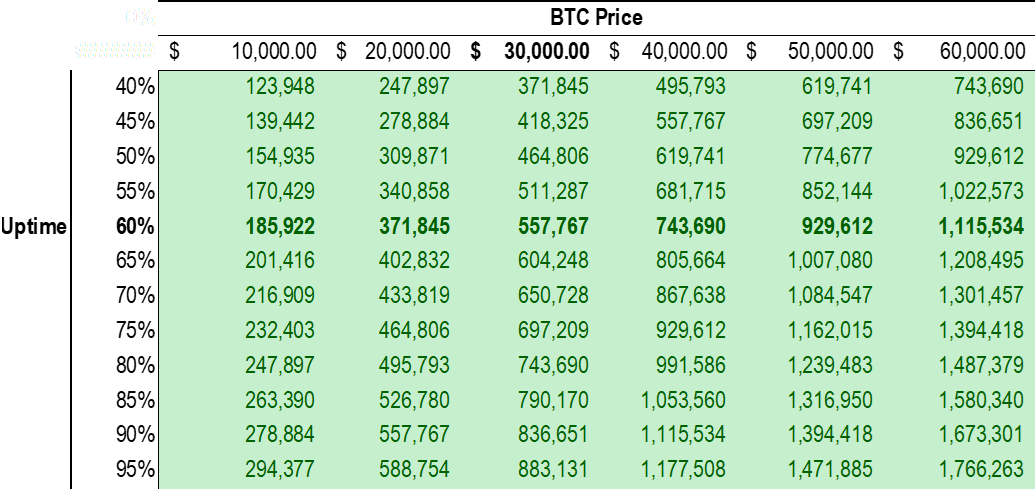Energy-to-Bytes: increase returns while cleaning up the planet
The New Wave of Energy Infrastructure Investing
According to prominent Western power centers, the world stands on the brink of an Energy Transition aimed at addressing the issues caused by Climate Change, a delicate topic eliciting significant debate and strong emotions.
Regardless of one's perspective the Energy Transition is, by now, an undeniable reality.
Both private capital and governments in the West are determined to fund this forthcoming transformation, which will necessitate the complete revamping of century-old electricity grids. The challenges involved in replacing base load power, the consistent and predictable energy generated by fossil fuels, with renewable sources like solar and wind are not however easily addressed.
The push towards the energy transition has been bolstered by the ESG (Environmental, Social, and Governance) movement. The European Union and numerous developed economies have committed to the Paris Agreement, setting their sights on achieving Net Zero emissions by 2050. However, attaining these ambitious targets may prove more challenging than initially anticipated.
At Algo Capital, our analysts dedicate their time and effort to deeply analyze the prominent economic trends, aiming to identify undervalued opportunities that can significantly impact the world and, consequently, our investments and those of our clients. The global focus on addressing climate change stands out as one of the major trends expected in the next decade. Therefore, we conducted extensive research to uncover a profitable approach within this trend.
This article explores the outcomes of our research, focusing on how to tackle the challenges presented by the Energy Transition and which solutions hold the most potential for energy investors and operators. In the initial section, we present relevant data regarding our current energy mix, future plans, and the primary obstacles faced by renewable energy assets. The subsequent section delves into the solutions being pursued in the market, with a specific focus on Energy-to-Byte solutions, particularly highlighting Bitcoin Mining as a controllable load resource. Finally, we present a compelling case study that exemplifies the advantages of integrating data centers alongside an underutilized renewable energy asset within a co-location setting.
The Energy Transition, how far are we really?
Data provided by BloombergNEF (BNEF) indicates that global investments in renewable energy infrastructure between 2010 and 2021 amounted to approximately $3.6 trillion. While this is a significant sum, renewable energy still represents a smaller fraction of the overall energy production, just over 30%:
Source: BP
Although the target is still distant, the path towards achieving it is ambitious and would necessitate a comprehensive system-wide transformation. Such predictions have been put forth by the International Energy Agency (IEA):
Source: Ember
To reach the target in 2035 for example, we would have to increase our solar powered generation by up to 15.4x:
Source: IEA
These are very ambitious figures and many argue their feasibility in the short timeframe targeted by the authorities. It may take longer than expected, but it is undeniable that renewables have been gaining a larger portion of our electricity generation capacity, thanks to government funding, incentives, tax breaks programs, and significant private and public investment.
What are the bottlenecks to the transition ?
The integration of renewables into a grid that was not originally designed for them poses several difficulties. Let’s expose a few of the most common:
1) Intermittency:
A significant challenge arises from the intermittent nature of renewable energy sources such as solar and wind power, which heavily rely on weather conditions. This intermittency introduces difficulties in aligning energy supply with demand, thereby impacting the stability and reliability of the grid.
According to the IEA, integrating the targeted percentage of renewables would require a 4x increase in flexibility, which refers to the ability to adjust energy production and consumption levels:
Source: IEA
Currently, the grid, particularly the demand side, lacks elasticity despite notable improvements on the supply side. Demand, or the energy-consuming sources (loads), often face challenges in rapidly reducing production, thereby straining the grid, especially with the introduction of intermittent renewables.
2) Curtailment:
Another issue arises when renewable sources generate more energy than the grid or local demand can accommodate, leading to oversupply. This surplus energy often goes to waste or gets disconnected from the grid, resulting in curtailment that limits the full potential of renewables. Unfortunately, the true costs of this curtailment, which are sometimes obscured by incentives or manipulation, have concealed the underlying challenges faced by renewable sources, marked by complexities and excesses.
The following graph, sourced from the IEA, illustrates the true costs associated with different energy sources.
Source: IEA
It is evident that, as it stands, solar and wind energy do not provide only benefits to the energy mix but pose also some considerable problems. If we bloodlessly substitute our entire energy mix with renewable sources without taking into account the adequate counterbalancing mechanism , we risk ending up in a generating a poorer energy output than what we have experienced over the past 30 years.
3) Profitability:
The financial feasibility of renewable energy projects can pose a challenge, especially in areas with low electricity prices or limited financial incentives. The profit margins for such projects may not be enticing, particularly when considering the substantial debt financing often required and the prevailing high interest rates. In countries like Germany and the broader European Union, extensive bonuses, tax breaks, and incentives have been implemented to encourage the development of renewable projects. However, critics argue that these incentives significantly distort the economic viability of renewables. Without such incentives, many contend that these investments would not be as attractive to investors.
4) Grid Stability:
Furthermore, the incorporation of renewable energy sources can impose challenges on grid stability, particularly as their penetration levels increase. The intermittent nature of renewables necessitates meticulous management of grid stability and the provision of ancillary services to ensure a consistent and dependable power supply. We’re witnessing more and more instances of grids malfunctioning leading to blackouts, like in Texas during the 2021 winter storm which left the state in the dark for four days.
5) Infrastructure Constraints:
Lastly, the effective integration of renewable energy frequently necessitates the establishment of complementary infrastructure, including transmission lines, grid enhancements, and energy storage systems. These investments play a crucial role in efficiently harnessing and delivering renewable energy to end consumers. However, these endeavors often face challenges, particularly in developing countries where governments allocate limited capital to infrastructure investments, if any at all. Due to the lack of sufficient funding avenues, renewable energy projects struggle to secure the necessary capital and incentives to progress further. As a result, their development is impeded.
What are we doing about it ?
Undoubtedly, ambitious plans for the energy transition call for equally ambitious solutions. Utilities and power producers have a range of options to tackle the challenges associated with this transition. Let's explore some of these solutions:
Energy Storage Systems: such as batteries, allow for the capture and storage of excess renewable energy during times of high generation. This stored energy can then be dispatched during periods of low renewable generation, helping to balance the intermittent supply and demand.
Grid-Scale Energy Management: use sophisticated forecasting, real-time monitoring, and control technologies to optimize the integration of renewable energy into the grid. These systems help balance supply and demand, manage grid stability, and efficiently dispatch electricity from renewable sources.
Demand Response Programs: incentivize consumers to adjust their electricity usage in response to supply fluctuations. By offering price incentives or other rewards, these programs encourage consumers to reduce or shift their electricity consumption during periods of high renewable generation or low demand.
Interconnection and Grid Integration: across larger geographic regions through interconnection helps mitigate the intermittent nature of renewables. By having a broader and diverse mix of renewable sources, it becomes more likely that there will be continuous energy generation.
Hybrid Systems: Integrating multiple renewable energy sources, such as solar and wind, with complementary characteristics, can help smooth out fluctuations in power generation. They then pair them with conventional generation sources to create a more stable and reliable energy supply.
Distributed Generation and Microgrids: such as small-scale renewable energy projects or mini-grids, can help utilize stranded energy resources locally. They are localized electrical networks and can be established in remote areas to provide reliable and independent power supply using local energy sources.
Power-to-X Technologies: Power-to-X technologies, such as power-to-gas or power-to-liquid, can convert excess energy into alternative forms such as hydrogen or synthetic fuels. These energy carriers can then be stored, transported, or utilized in other sectors such as transportation or industrial processes.
Off-Grid Solutions: For extremely remote or isolated areas, off-grid solutions like standalone solar systems or small-scale wind turbines can provide local power generation without the need for extensive grid infrastructure.
Power-to-Bytes: these are a subsection of Power-to-X, where the power is transformed in computational power. Firstly, they power High Computing Processing (HCP) units, supporting the digital infrastructure for cloud computing, artificial intelligence (AI), and gaming. Additionally, they can be employed for cryptocurrency mining.
These solutions, combined with ongoing technological advancements, policy support, and market mechanisms, are helping to address the intermittency, and other challenges of renewable energy and facilitate its greater integration into the overall energy system.
Physical & Digital merge to clear the bottlenecks for renewable investors.
As we’ve seen, there are numerous emerging technologies and solutions being pursued to facilitate the seamless integration of renewable sources with existing energy infrastructure. Among these, the Energy-to-Bytes vertical is a relatively nascent but underappreciated.
At Algo Capital, we recognize the untapped potential in this field and have launched a dedicated service to assist utilities and energy investors in implementing these solutions. This presents a net positive opportunity as it addresses the challenges outlined earlier, creating value for all participants in the value chain.
If you are an energy company, an utility operator or an investor in energy, reach out to us for a longer presentation on how these energy-to-byte solutions can improve your margins along with your ESG score.
Given our expertise in digital assets, we have naturally gravitated towards focusing on the Bitcoin Mining segment, which possesses unique characteristics not seen in traditional energy consumers.
For the purpose of this discussion, we invite you to momentarily set aside any preconceived notions or biases regarding cryptocurrencies. Instead, let's view mining as the operation of servers in a data center. These servers differ from conventional ones as they consume more energy, do not require proximity to powerful Wi-Fi transmitters, can be situated in remote locations, and do not rely on finding customers to generate revenue.
The Distinctive Nature of Bitcoin Mining as a Controllable Load
Bitcoin mining possesses several unique characteristics that set it apart as a distinct energy load. These characteristics include:
Intensive Energy Consumption: Bitcoin mining requires a substantial amount of computational power to solve complex mathematical problems, resulting in high energy consumption.
Continuous Operation: Unlike many other industries or residential consumers that experience varying energy demand throughout the day, Bitcoin mining operates continuously, necessitating a steady and uninterrupted energy supply. This constant demand for electricity sets mining operations apart in terms of energy consumption patterns.
Location Flexibility: Miners have the flexibility to establish their facilities in various regions based on factors such as energy costs, regulatory environments, and proximity to target markets. This mobility allows miners to seek out regions with favorable energy prices or access to renewable energy sources.
Portability and Scalability: Mining rigs used in Bitcoin mining are portable and can be easily moved to different locations. This portability enables miners to take advantage of favorable energy conditions or adapt to changing circumstances. Additionally, the scalability of mining operations allows for rapid expansion or contraction in response to market conditions.
Potential for Demand Response: Bitcoin miners have the ability to curtail or adjust their energy usage in response to grid conditions, energy prices, or environmental considerations. This demand response capability enables miners to align their operations with the availability of renewable energy or grid constraints.
Considering these factors, Bitcoin mining presents a unique energy load. Particularly noteworthy is the role of Bitcoin mining as a valuable resource for demand response programs, making it a crucial element in achieving a successful energy transition.
Furthermore, Bitcoin Mining can be regarded as a controllable load, capable of being adjusted rapidly and without straining the equipment, known as ASICs miners, responsible for processing the computations.
Let’s look at this graph that compares it with more traditional loads that participate in Demand Response programs:
Source: Lancium
If we use a company like Lancium or similar companies in Europe as a proxy for efficient DR programs through Bitcoin Mining as a whole, we can observe how it adds a really compelling case if evaluated against the other solutions. It appears to be far superior to its competitors.
As we have explored earlier, the advantages presented by this new type of data center can be highly appealing for utility operators. Despite initial skepticism and concerns surrounding the digital asset aspect, many energy companies have started developing pilot programs around this concept.
Source: Coindesk
It may seem improbable, but Bitcoin Mining is actually one of the greenest industries, with over 60% of miners being powered by renewable sources. This can be attributed to the unique nature of this energy consumer, which seeks to utilize affordable, stranded, and abundant energy supplies.
Source: Bloomberg
Why Consider Co-Locating with a Data Center?
For utility managers and investors who possess underperforming or imbalanced energy assets, it is worthwhile to carefully consider the potential advantages of integrating this technology into their operations or investment portfolios:
Offset Imbalances in Renewable Assets: Co-locating or integrating with a miner can help address imbalances between the demand and supply of renewable assets, ensuring a more stable and efficient utilization of renewable energy.
Revenue Stabilization & New Streams: By participating in the bitcoin mining process, energy companies can stabilize their revenue streams and explore new sources of income, diversifying their business models and reducing reliance on traditional energy markets.
Improve Grid Sustainability: Integrating with a miner can contribute to the overall sustainability of the grid by utilizing excess renewable energy that would otherwise go to waste. This maximizes the efficiency of renewable energy generation and reduces reliance on non-renewable sources.
Increase Grid Reliability and Resilience: The integration of miners into the grid can enhance its reliability and resilience, as miners offer a controllable load that can adjust its energy usage based on grid conditions. This flexibility helps manage fluctuations in energy supply and demand, contributing to a more stable grid infrastructure.
Finance New Developments and Attract Investors: By incorporating miners, energy companies can improve the economic viability of renewable projects, making them more attractive to investors. This can accelerate the deployment of renewable energy assets and stimulate further development in the sector.
Reduce Cost of Capital: Integrating with miners can potentially reduce the cost of capital for renewable energy projects. The additional revenue generated through mining activities can help offset initial investment costs and improve the financial viability of the projects.
Reduce Carbon Emissions: By utilizing excess renewable energy for mining operations, the integration of miners can, in some cases, help reduce carbon emissions associated with traditional energy production methods. This contributes to the transition to a more sustainable and low-carbon energy system.
Energy Storage: Miners can serve as a form of energy storage by utilizing excess renewable energy. Instead of wasting this energy, it can be converted into cryptocurrency, effectively storing the energy for future use.
It is evident that taking the time to understand this technology and considering its economic and business implications is worthwhile. While skepticism may still exist, more and more energy companies are embracing the integration of energy and digital assets due to the compelling opportunities it presents.
Having conducted a comprehensive review of the challenges and benefits associated with integrating this technological component into renewable energy assets with specific characteristics, let's further illustrate the concept by examining a case study.
Case Study:
Let's explore a case study involving an infrastructure investor who manages a large portfolio of renewable assets. The fund is facing challenges such as subpar return on investment (ROI), and its struggling to supply a stable cashflow on its large portfolio.
The fund is now seeking optimization solutions to reduce expenses, improve their environmental, social, and governance (ESG) score, and enhance the financial performance of these assets. To achieve this goal, the fund has started discussions with an expert in energy-to-bytes, a company with experience in the digital asset space and cryptocurrency mining.
The investor has in his portfolio a stranded solar energy resource of 15 MW, as it has been built ahead of time to take advantage of a zone that was supposed to be linked to the grid, but it hasn’t been made operational yet. To monetize this stranded asset, the company is planning to find an off taker to monetize this asset until the grid connection will become available.
The second asset is a grid connected wind farm that can’t fully absorb its capacity as it has been overbuilt, resulting in excess energy production during peak hours. Curtailing this excess energy is costly for the company and strains the equipment, leading to a decline in the farm's ROI. On average, there is approximately 2.6 GWh of excess energy generated annually.
After an evaluation, the company and the fund decide to proceed with the implementation of two pilot projects to showcase the potential of the solution. If the pilots are successful, the company could assist the fund in applying this concept to its entire portoflio.
Solar Farm - Power Purchase Agreement (PPA) with Miner
With this asset, the fund decides not to take direct exposure to Bitcoin nor operate the data center. The fund prefers to avoid the burden of managing the mining hardware and holding Bitcoin on its balance sheet.
The table below presents information on the photovoltaic farm's generation capacity that could be sold to the miner through a long-term contract:
Source: Algo Capital
The miner and the power generator agree to a $50 MW power price.
Energy Producer Profitability:
By entering into an offtake agreement with the miner, the fund can monetize the stranded asset, creating a revenue stream that improves the internal rate of return (IRR) for the project investors:
Source: Algo Capital
Thanks to this new customer, the profitability of this single asset increases by adding $6.5 million per year. This added stream could make a bad investment profitable again, and could help the fund increase it’s performance.
Now, let's shift our focus to look at the Bitcoin miner's side of the equation.
Bitcoin Miner Profitability:
The tables below outline the assumptions and calculations for Bitcoin production:
Source: Algo Capital
Glossary:
Network Hashrate: the computational power dedicated to mining Bitcoin and securing its blockchain. It measures the speed at which the network's miners perform calculations or "hashes" to validate and add new transactions to the blockchain.
Block Subsidy: the reward miners get paid upon adding a block to the blockchain.
Fee Reward: the reward miners get paid as a percentage of total fees paid to the blockchain.
Pool Fee: miners are generally connected to a Bitcoin Mining pool which makes the revenues more reliable and stable.
Uptime: the percentage amount of time the machine is operational.
Based on an electricity price of $0.05 per kWh, a 95% uptime, and a Bitcoin price of around $27k, the mining operation would be profitable based on gross margin.
Each variable mentioned has a considerable impact on the miner's profitability, and further sensitivity analysis will be provided in a later section to stress test the operations.
Based on the aforementioned assumptions, it is estimated that approximately 5,058 ASIC miners would be required to fully utilize the energy load curtailed by the photovoltaic plant.
Source: Algo Capital
The assumptions are based on the Antminer s19 Pro model, known for its high efficiency, which translates to higher capital expenditure (capex) and better performance.
There are other ASIC available at lower costs, but they would require a lower electricity cost per kilowatt-hour (kWh) to be profitable. These ASICS are typically installed by integrated renewable energy companies to monetize excess energy and provide demand response services. We’ll take a look at this option in the second scenario.
The total capex for purchasing the machines amounts to approximately $8.4 million, and these assets have a minimum lifespan of 5 years. If needed, they could also be sold on the secondary market, allowing for some fund recoupment.
Currently, ASICs are relatively inexpensive considering their price cycles, suggesting a favorable entry point for profitability. In fact, the entire capex investment could be recovered in just over a year, specifically in 483 days or around 16 months.
Profitability:
Based on the assumptions above, let’s look at the profitability of the mining operation:
Source: Algo Capital
Over the life of the contract, the miner could rack up around $64 million in revenues, keeping in mind that these forecasts have been made with a constant Bitcoin price.
To showcase to the reader how a different mix of electricity prices and bitcoin prices can affect the performance of the miner, we’ve compiled a sensitivity analysis of the gross profit margin of the operation:
Source: Algo Capital
It is evident how the operation remains quite profitable in most scenarios. A large drop in Bitcoin price coupled with a high electricity paid for kWh could be deadly to this business. Finding a cheap energy source is therefore paramount to ensure the long term sustainability of the partnership between the miner and the energy company. On the Bitcoin price side, volatility is a problem only without a careful management of the treasury, as there are many options to address this problem like hedging your price risk or forward sell production to a financial partner.
In this simplified scenario, both parties are satisficed. The energy producer has monetized an asset that was not producing revenues, transforming a cost into a revenue line. The Bitcoin miner has found a cheap energy source and entered into a long-term contract which gives it the runway it needs for its business plan, expecting a bullish market in Bitcoin.
Wind Farm - Vertical Integration with Excess Energy:
Let’s now look at the second asset, a Wind farm.
In this instance, after understanding the intricacies of mining with the first pilot, the fund has become more confident, and decided to directly put up the capital to buy the ASIC machines, as it understood this was a cycle low in the prices of these assets.
Let’s look at how this scenario stacks up against the first from a financial perspective.
The Wind asset has a curtailment problem of around 2.6 GWh per year. This energy is curtailed and therefore wasted. This is causing strain to the equipment and is a cost for the operator.
Source: Algo Capital
As the energy producer won’t be selling the energy to an off-taker but mine directly, the cost of electricity will be $0 and all the revenues for the operator will be derived from selling Bitcoins. The uptime will be only 60%, as the only instances where the miner is switched on is when there’s excess energy produced, which given the position of the wind farm is quite often even though at irregular intervals during the seasons.
Below are showcased the assumptions to calculate the cost of producing bitcoin in this scenario:
Source: Algo Capital
Compared to the solar farm, we can notice how the electricity cost has a positive impact, but the machines installed are of older generation and much less lucrative than the Antminer s19j Pro. They are much cheaper though, which implies a lower capex and a faster payback period.
Source: Algo Capital
In fact, as we observe the table above, we can notice that we’d need to invest roughly $150k to purchase 2,308 ASIC machines which could be paid back in 108 days or just over 3 months.
Profitability:
The profitability profile of this mining operation is showcased below:
Source: Algo Capital
The 2.6 GWh of wasted energy has been translated into a $500 thousand additional revenue line for the investor. These figures will fluctuate with the Bitcoin price, but the investor could hedge their position as it is customary in the energy market.
To showcase the effect of different Bitcoin Prices on the yearly gross revenues of the company if the Bitcoin position is unhedged, we can notice how there’s no instances where the operation doesn’t produce a positive return. Of course, having access to energy priced at zero, and low capex machines, gives way to obtaining an almost riskless profit on the investment.
Source: Algo Capital
To conclude the case study, we’ve seen how through an albeit simplified example, we’ve showcased how an infrastructure investor could hypothetically add ~$7 million to its top line with an investment of $150k plus the fees due to the mining partner to operate the assets, which hasn’t been included in this example.
There are more complexities to be considered when applying this calculations to the real world, such as the jurisdiction, regulations and additional items. On the other hand, we haven’t fully assessed the benefits of additionally providing Ancillary Services to the grid like Demand Response, which could add more revenues to the investor as well as providing sustainability and flexibility to the grid.
We hope this overview was helpful in presenting the case for Energy-to-Bytes as an underappreciated but compelling solutions in addressing profitability and sustainability concerns to energy investors and operators.
At Algo Capital, we’ve built a service line from scratch to help bridge the gap between data centers and renewable energy providers. We’ve built a strong network of technical partners with experience in energy and data center infrastructure that coupled with our capital markets and digital asset expertise can provide you with a turn key solution to maximize the value of your energy assets.
If you are interested in exploring how we can help address this bottleneck for you, reach out by scheduling a time with one of our professionals or find more information on our website.




